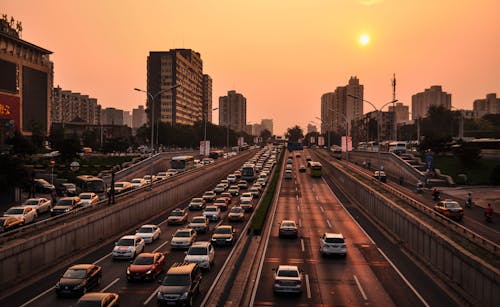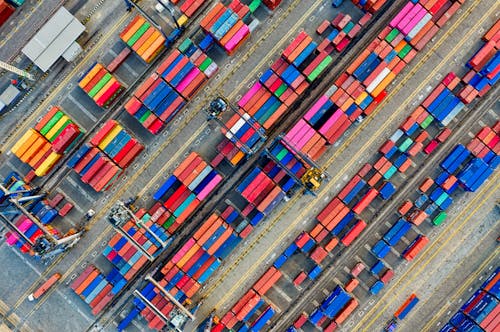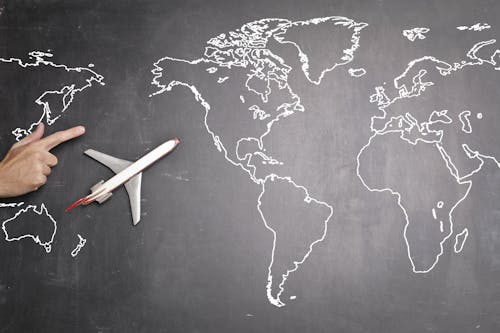10 Common Problems Faced By Small Businesses In International Sourcing!

Being a digital business has never been more exciting than now! The digital revolution that was gaining impetus, has been accelerating since 2020. The volume of retail business is flourishing online as more and more customers switch to digital mediums. Whether you are a founder of an online venture or a buyer in a fashion organization, sourcing is a daunting task particularly if it’s from outside your own country. We are analysing the top 10 major issues which make international sourcing time-consuming and challenging.
- The Long Distance:
In most cases of international sourcing, suppliers are in faraway countries that cannot be frequently visited to close the deal in a short time.
Buyers want to personally visit the manufacturing facilities of the sellers to verify the actual working conditions and quality of the products but cannot do this all the time.
The current pandemic is making it increasingly difficult for buyers to visit the supplier markets. Distance also increases the cost incurred due to transportation and might create a lag in the availability of orders.

2. Language Barriers:
Buyers and manufacturers are often from regions that speak different languages. It becomes difficult for them to communicate and understand each other’s requirements. Even if they speak the same language, the currencies might differ and the complicated conversion rates make it difficult for the closure of the deal, especially for the first time.
Often, a middleman is required to facilitate communication between both parties. Often, the agents charge hefty commissions, and the deal becomes expensive for both parties.
3. Transportation Risks:
International shipments are long-distance and are either shipped by a cargo flight or ship. Cargo flights are faster than ships but are also comparatively very expensive. If a consignment takes a longer time, the risks involved also become higher. In uncertain situations like war and natural calamities such as pandemics, it becomes extremely difficult for both parties to keep a track of the shipments.
Lack of real-time updates on the orders often leaves the buyers clueless about the status of their order and it impacts their overall business planning. Most small and medium suppliers opt for goods transport via marine transportation instead of air transportation. However, there are inherent risks involved in marine transportation due to the perils of the sea. Even though most of the risks can be covered through marine insurance, it’s an added cost and hassle for small and medium buyers.

4. Expensive Agents:
In international trade, buyers and suppliers are rarely in direct contact with each other. There is often a partner or trade agency in between that helps them facilitate the deal. However, these agencies may not maintain transparency between both parties. Suppliers are mostly not aware of the final cost to the buyers who pay a higher amount. The final cost has a significant amount that goes as commission to the agents. Additionally, the indirect approach often creates a communication gap and timeline delays.
5. Lack of Reliability
Once buyers find a supplier and place their order, there is a long period of waiting involved. Until the products reach the buyer, there is no visibility about the quality of material sent and the delivery timelines. The buyers lose money and time if the quality of products received does not meet their standards. But an even bigger loss is that they may not find alternate products in a short time and may lose their planned revenue.

6. Import & Export Restriction & Policies:
Perhaps the most difficult issue while sourcing materials from another country is that the import & export policies vary in every country to a great extent. Frequent changes keep happening in custom duties for imported products to protect home industries and tariff rates for raw materials exports. It gets difficult for small and medium players to keep up with this constantly evolving environment.
7. Extensive Documentation:
Several custom formalities and rules have to be fulfilled before the actual order can be placed and delivered. The foreign trade policies, procedures, rules, and regulations differ for every country and are very dynamic. The documents have to be thoroughly vetted and verified before going ahead with the order. Most small and medium players lack the bandwidth and expertise to understand & manage the required documentation.

8. Quality Risks:
Every country has different and multiple rules determining the acceptable quality of products. The supplier has to ensure that the quality of the product is as per the import norms of the buyer’s country. There could be numerous quality and other certifications that need to be possessed by the supplier to be eligible for export of the products in the designated country. The buyer has to be very cautious in dealing with the suppliers to ensure proper quality checks.
9. Payment Risks:
Currency plays a vital role in international trade, and the stakeholders involved need to be well informed about that particular currency’s behaviour and anticipate the fluctuations. The remittance from payment takes a longer time than domestic trade. Long order delivery and payment pile up to increase the debts for the supplier. Hence, there’s a huge financial risk involved in trade transactions. Credit is accessible only to 50% of the suppliers who need it. Thus transactions are often risk-ridden with both sides needing to be cautious when dealing with new partners.

10. Dynamic Economic Environment:
The economic environment at the level of international trade is much more dynamic and fluctuating than domestic trade. The stakeholders involved need to be constantly aware of the changing variables such as freight rate changes, currency fluctuations, foreign trade policy changes, natural calamities, and socio-economic changes.
Big and established manufacturers have dedicated teams and extensive supply chains to handle each of the problems. However, these challenges become major obstructions for most small and medium-scale businesses. Though they have a strong desire to expand their business in the international markets, lack of resources, expertise, and bandwidth make it difficult to handle these challenges.

We at Tradyl, are helping buyers all over the world to overcome these challenges and source quality products from reliable suppliers in a faster, safer, and more efficient manner. You can read more about us here.


